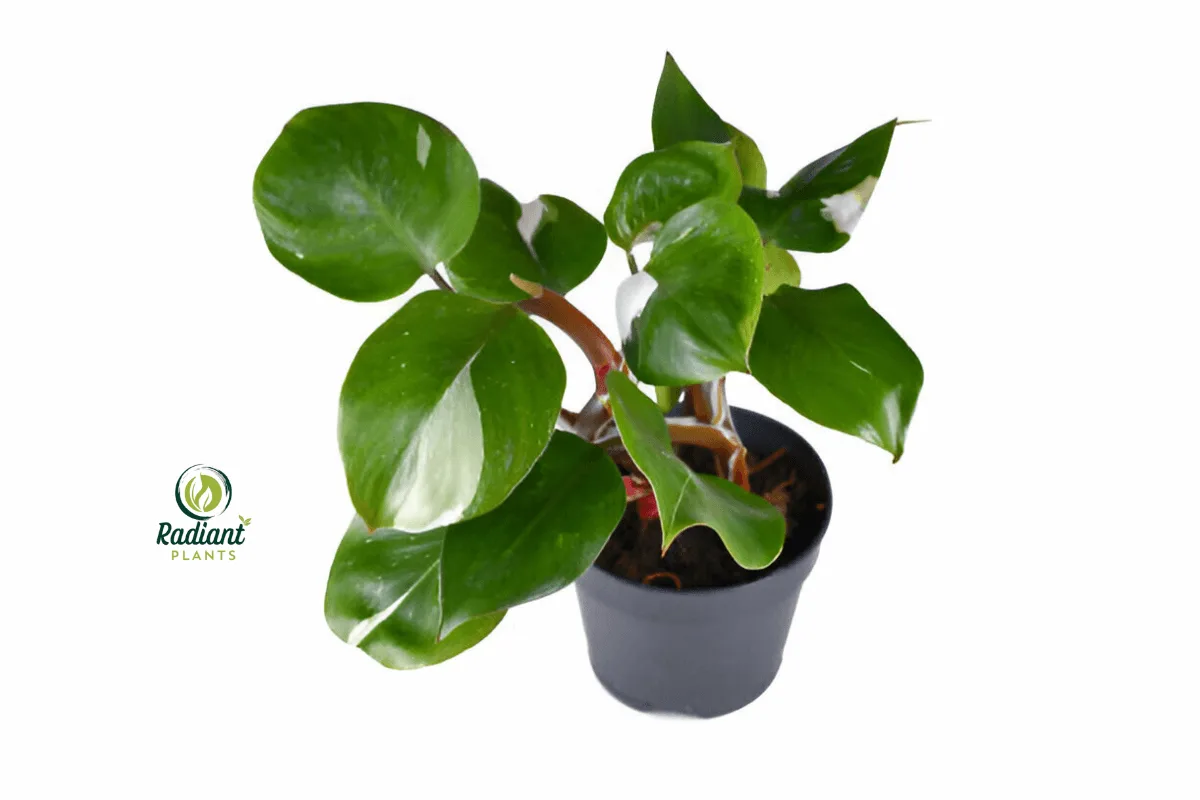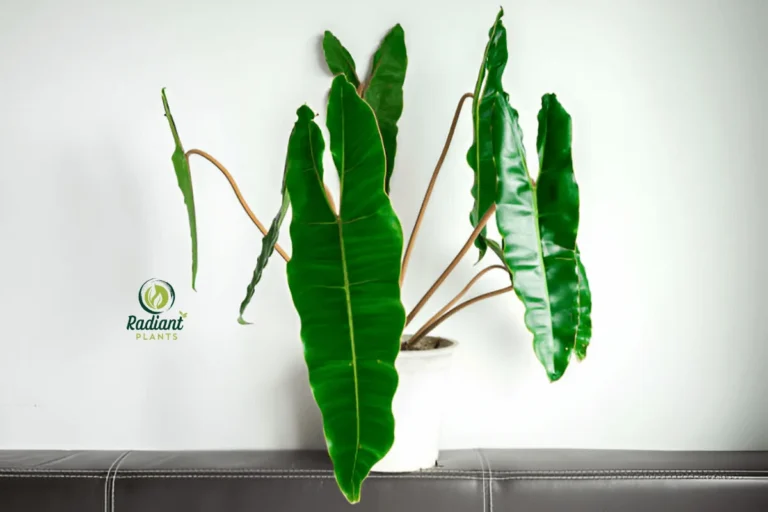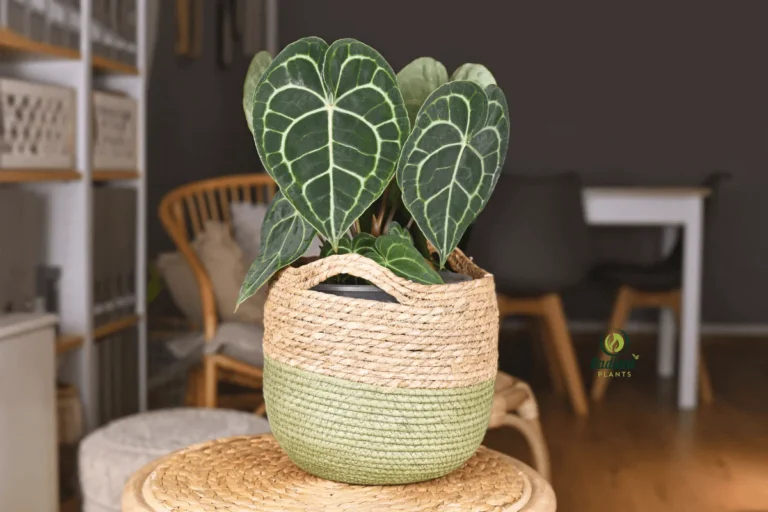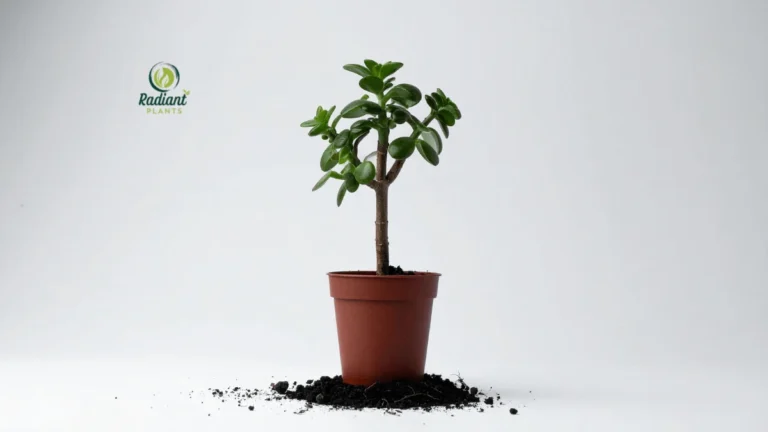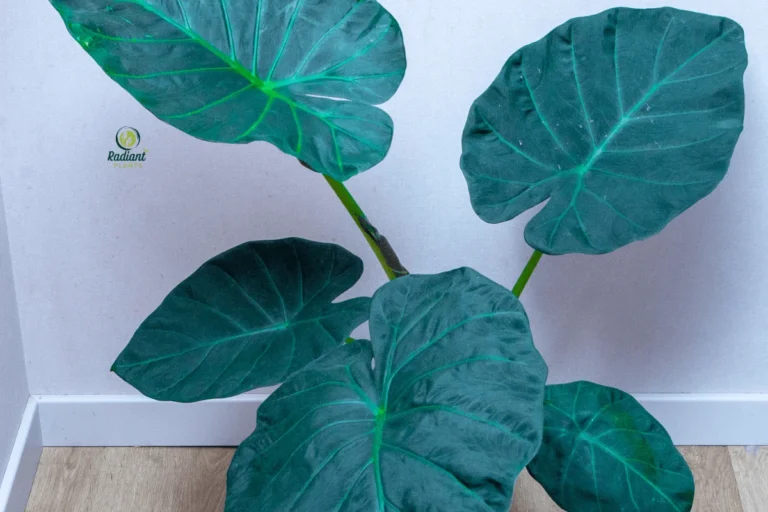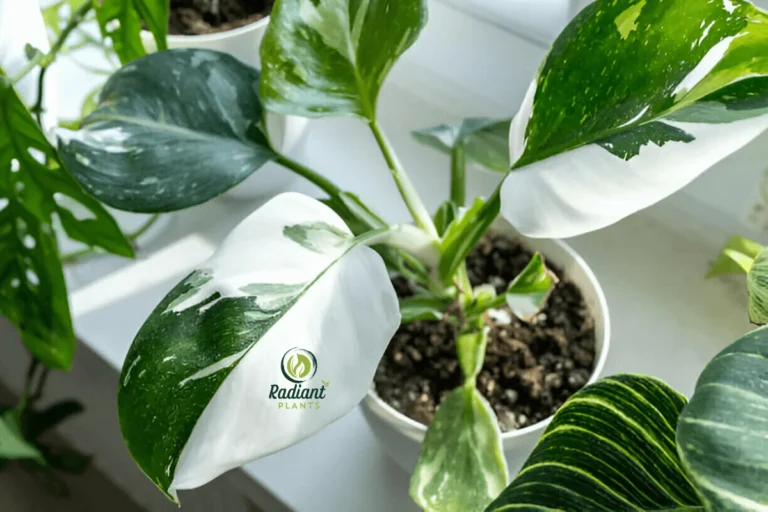Philodendron White Knight: 7 Care Tips for Stunning Growth
The Philodendron White Knight stands out as one of the most stunning indoor plants you can grow. This gorgeous variegated beauty captures hearts with its striking white and green leaves that look like nature’s own artwork. Unlike many other houseplants, the Philodendron White Knight brings a touch of elegance and sophistication to any room.
What makes this plant so special? It’s all about those amazing white patches that dance across deep green leaves. The variegated foliage creates a beautiful contrast that makes your indoor plant collection truly shine. Plus, when you give your Philodendron White Knight the right care, it rewards you with incredible growth and even more stunning leaves.
Many plant lovers struggle with keeping their Philodendron White Knight healthy and vibrant. But don’t worry! We’ve got you covered with 7 proven care tips that will help your plant thrive. These simple strategies will transform your plant care routine and give you the lush, beautiful results you’ve been dreaming of.
Table of Contents
Table of Contents
Understanding Your Philodendron White Knight



Origins and Characteristics
Your Philodendron White Knight comes from the tropical rainforests of South America. In its natural home, this climbing plant grows up tall trees, reaching toward filtered sunlight through the forest canopy. This background helps us understand what makes these plants happy in our homes.
The most eye-catching feature of the Philodendron White Knight is its variegated leaves. Each leaf shows off a unique pattern of creamy white and rich green colors. No two leaves look the same, which makes every plant special and one-of-a-kind.
In indoor environments, your Philodendron White Knight can grow quite tall if given proper support. Most plants reach 3-6 feet indoors, but some can grow even taller with the right care. The leaves typically measure 6-12 inches long and have a glossy, waxy texture that reflects light beautifully.
Characteristic | Details |
|---|---|
Native Habitat | South American rainforests |
Growth Pattern | Climbing vine |
Indoor Height | 3-6 feet typically |
Leaf Size | 6-12 inches long |
Variegation | White and green patterns |
Growth Rate | Moderate to fast |
Why Proper Care Matters
Taking good care of your Philodendron White Knight makes a huge difference in how it looks and grows. When you don’t follow the right care steps, several problems can happen. Your plant might lose its beautiful white variegation, develop yellow or brown leaves, or stop growing altogether.
Poor care often leads to root rot, pest problems, and weak growth. Many people make the mistake of treating their Philodendron White Knight like a regular green plant, but variegated plants need extra attention to maintain their special coloring.
When you follow proven care methods, your plant will reward you with:
- Vibrant white and green variegation
- Healthy, glossy leaves
- Strong, steady growth
- Better resistance to pests and diseases
- More new shoots and a fuller appearance
Setting realistic expectations helps you succeed with your plant care journey. Your Philodendron White Knight won’t grow overnight, but with consistent care, you’ll see amazing results within a few months.
The 7 Essential Care Tips for Philodendron White Knight Success
Tip 1 – Perfect Light Conditions
Getting the light right is probably the most important thing you can do for your Philodendron White Knight. These plants love bright, indirect light that mimics the filtered sunlight they get in their natural forest home.
Place your plant near a window where it gets plenty of light but not direct sunlight. East or north-facing windows work great because they provide gentle, consistent light throughout the day. If you only have south or west-facing windows, place your plant a few feet back from the glass or use a sheer curtain to filter the light.
Direct sunlight can burn the beautiful white parts of the leaves, turning them brown and crispy. The white areas don’t have chlorophyll to protect them, so they’re extra sensitive to strong light. Always avoid placing your Philodendron White Knight in direct sunlight.
If your home doesn’t get enough natural light, don’t worry! You can use grow lights to keep your plant happy. LED grow lights work best and should be placed 12-18 inches above your plant. Run them for 12-14 hours a day to give your plant the light it needs.
Best Light Setup Options:
- East-facing window with morning sun
- North-facing window with consistent light
- Filtered south/west window light
- LED grow lights as a supplement or main source
Tip 2 – Optimal Watering Schedule
Watering your Philodendron White Knight correctly keeps it healthy and prevents common problems like root rot. The key is to water when the soil is partially dry, not completely wet or bone dry.
Check the soil moisture by sticking your finger about 2 inches deep into the potting mix. If it feels dry at this depth, it’s time to water. If it still feels moist, wait a few more days and check again.
During the growing season (spring and summer), you’ll probably water every 7-10 days. In fall and winter, your plant needs less water, so you might water every 10-14 days. Always adjust based on your home’s temperature and humidity levels.
When you do water, give your plant a thorough drink. Water slowly until you see water draining from the bottom holes. This ensures the entire root system gets moisture and helps flush out any salt buildup from fertilizer.
Season | Watering Frequency | Soil Check Method |
|---|---|---|
Spring/Summer | Every 7-10 days | 2-inch finger test |
Fall/Winter | Every 10-14 days | 2-inch finger test |
High Humidity | Less frequent | Check the soil often |
Low Humidity | More frequent | Check soil often |
Signs your Philodendron White Knight needs water:
- The top 2 inches of soil feel dry
- Leaves start to look slightly droopy
- Soil pulls away from the pot edges
- The plant feels lighter when lifted
Signs of overwatering:
- Yellow leaves that feel soft and mushy
- Soil stays wet for more than a week
- Fungus gnats are flying around the plant
- A bad smell is coming from the soil
Tip 3 – Ideal Soil and Drainage
Your Philodendron White Knight needs well-draining soil that holds some moisture but doesn’t stay soggy. The best potting mix combines different materials to create the perfect growing environment for your plant’s roots.
A good basic mix includes regular potting soil, perlite for drainage, and some organic matter like bark or moss. You can buy a pre-made aroid mix, or make your own by combining 50% quality potting soil, 30% perlite, and 20% orchid bark or moss.
The container you choose matters just as much as the soil. Always use pots with drainage holes to prevent water from sitting at the bottom. Terra cotta pots work great because they let excess moisture evaporate through the sides.
Plan to repot your Philodendron White Knight every 2-3 years or when it becomes root-bound. Signs it needs repotting include roots growing out of drainage holes, water running straight through without absorbing, or very slow growth despite good care.
Perfect Soil Mix Recipe:
- 50% high-quality potting soil
- 30% perlite or pumice
- 20% orchid bark or sphagnum moss
- Optional: a handful of worm castings for nutrients
When repotting, choose a pot that’s only 1-2 inches larger than the current one. Going too big can lead to soil staying wet too long, which causes root problems.
Tip 4 – Temperature and Humidity Control
Keeping your Philodendron White Knight comfortable with the right temperature and humidity helps it grow strong and maintain its beautiful variegation. These tropical plants prefer warm, humid conditions similar to their rainforest home.
The ideal temperature range for your plant is 65-80°F (18-27°C). This range keeps your plant actively growing without stress. Avoid placing your Philodendron White Knight near heat sources like radiators, fireplaces, or heating vents, as these can create hot spots that damage the leaves.
Cold drafts and sudden temperature changes can shock your plant and cause leaf drop. Keep your plant away from air conditioning vents, drafty windows, and exterior doors that open frequently.
Humidity is super important for keeping your Philodendron White Knight happy. These plants love humidity levels between 50% and 70%. Most homes have humidity around 30-40%, which is too low for optimal growth.
Easy Ways to Increase Humidity:
- Use a humidifier near your plant
- Place a water tray with pebbles under the pot
- Group plants together to create a microclimate
- Mist the air around the plant (not the leaves directly)
Environmental Factor | Ideal Range | What to Avoid |
|---|---|---|
Temperature | 65-80°F (18-27°C) | Below 60°F, above 85°F |
Humidity | 50-70% | Below 40% |
Air Circulation | Gentle breeze | Direct drafts |
Stability | Consistent conditions | Sudden changes |
Monitor your plant for signs of temperature or humidity stress. Brown, crispy leaf edges usually mean the air is too dry, while yellow, dropping leaves might indicate temperature stress.
Tip 5 – Strategic Fertilization
Feeding your Philodendron White Knight the right nutrients helps it grow strong and maintain its stunning variegation. These plants are moderate feeders, which means they need regular nutrition but not too much.
During the growing season (spring and summer), fertilize your plant every 2-4 weeks with a balanced, diluted fertilizer. Look for a fertilizer with equal numbers like 10-10-10 or 20-20-20. Always dilute it to half the recommended strength to avoid burning the roots.
In fall and winter, your plant grows much more slowly and needs less food. Fertilize only once a month or skip fertilizing altogether during the coldest months. This rest period is natural and healthy for your plant.
Liquid fertilizers work best because they’re easy to control and mix with your regular watering routine. You can also use slow-release fertilizer pellets, but be careful not to overapply them.
Fertilizing Schedule:
- Spring/Summer: Every 2-4 weeks with diluted liquid fertilizer
- Fall/Winter: Monthly or skip entirely
- Strength: Always use half the recommended amount
- Type: Balanced fertilizer (equal N-P-K numbers)
Signs your Philodendron White Knight needs more fertilizer:
- Slow growth during the growing season
- Pale or yellowing leaves
- Small new leaves
- Loss of variegation intensity
Signs of over-fertilization:
- Brown, crispy leaf tips
- Salt buildup on the soil surface
- Rapid, weak growth
- Root burn or damage
Tip 6 – Pruning and Maintenance
Regular pruning and maintenance keep your Philodendron White Knight looking its best and encourage healthy growth. Don’t worry – pruning is easier than you might think, and your plant will thank you for the attention.
The best time to prune is during the growing season when your plant can quickly heal and produce new growth. Use clean, sharp scissors or pruning shears to make clean cuts that won’t damage the plant.
Start by removing any dead, damaged, or yellowing leaves. Cut them off at the base where they connect to the main stem. This helps your plant focus its energy on healthy growth instead of trying to save damaged parts.
You can also prune to control size and shape. If your Philodendron White Knight is getting too tall or leggy, cut it back to encourage bushier growth. Make cuts just above a node (the bump where leaves grow) to promote new shoots.
What to Prune:
- Dead or yellowing leaves
- Damaged or diseased parts
- Leggy or overgrown stems
- Stems with poor variegation
Cleaning your plant’s leaves helps it photosynthesize better and prevents pest problems. Gently wipe the leaves with a damp cloth every few weeks to remove dust and debris. Avoid using leaf shine products, as these can clog the leaf pores.
As your Philodendron White Knight grows, it will need support to climb properly. Install a moss pole, trellis, or stakes to help your plant grow upward. This mimics how it would climb trees in nature and often improves variegation, too.
Tip 7 – Pest Prevention and Treatment
Keeping pests away from your Philodendron White Knight is much easier than dealing with an infestation later. Prevention is your best defense against common houseplant pests that love to munch on these beautiful plants.
The most common pests that bother Philodendron White Knight include spider mites, aphids, scale insects, and mealybugs. These tiny bugs can damage leaves, slow growth, and even kill your plant if left untreated.
Check your plant weekly for early signs of pest problems. Look for tiny webs, sticky honeydew, small bumps on stems, or white cottony masses. Catching problems early makes treatment much easier and more effective.
Pest | Signs | Treatment |
|---|---|---|
Spider Mites | Tiny webs, stippled leaves | Increase humidity, insecticidal soap |
Aphids | Sticky honeydew, clusters on new growth | Insecticidal soap, neem oil |
Scale | Brown/white bumps on stems | Rubbing alcohol, systemic insecticide |
Mealybugs | White cottony masses | Rubbing alcohol, insecticidal soap |
Prevention Strategies:
- Quarantine new plants for 2-3 weeks
- Keep humidity levels appropriate
- Avoid overwatering and over-fertilizing
- Clean leaves regularly
- Inspect plants weekly
- Maintain good air circulation
For treatment, start with the gentlest methods first. Insecticidal soap and neem oil work well for most pest problems and are safe to use indoors. For severe infestations, you might need systemic insecticides, but always follow label directions carefully.
Troubleshooting Common Issues
Variegation Problems
One of the most frustrating problems with Philodendron White Knight is losing that beautiful white variegation. When leaves start coming in solid green, it usually means your plant isn’t getting enough light or has other care issues.
The white parts of the leaves can’t make food through photosynthesis, so your plant needs really good light to support both the green and white areas. If light is too low, your plant will produce more green leaves to survive.
To maintain strong variegation, make sure your plant gets bright, indirect light for most of the day. If you notice new leaves coming in mostly green, move your plant to a brighter spot immediately.
Sometimes, entire stems will start producing only green leaves. When this happens, prune these stems back to encourage new, variegated growth. Cut just above a node that has good white variegation.
Tips for Better Variegation:
- Provide bright, indirect light
- Prune out all-green growth
- Avoid over-fertilizing with nitrogen
- Maintain proper humidity levels
- Choose plants with stable variegation genetics
Growth and Health Concerns
Slow growth in your Philodendron White Knight usually points to care issues that are easy to fix once you know what to look for. During the growing season, healthy plants should produce new leaves regularly and show steady upward growth.
If your plant has stopped growing, check these common causes:
- Light: Too little light slows growth dramatically
- Water: Both over- and underwatering affect growth
- Nutrients: Lack of fertilizer during the growing season
- Root bound: Plant needs repotting
- Temperature: Too cold or too hot conditions
Yellow leaves can worry new plant parents, but they’re often normal as plants age. Lower, older leaves naturally turn yellow and drop as the plant puts energy into new growth. However, if many leaves turn yellow quickly, check your watering habits and root health.
Leaf drop can happen when plants experience stress from changes in light, water, or temperature. Try to keep conditions stable and avoid moving your plant around too much. Most plants recover from stress-related leaf drop with consistent care.
Advanced Care Techniques
Propagation Methods
Growing new Philodendron White Knight plants from your existing one is fun and rewarding. The best time to propagate is during the active growing season when your plant can heal quickly and root faster.
The easiest method is stem cutting propagation. Look for a healthy stem with at least 2-3 nodes (the bumps where leaves grow). Cut just below a node with clean, sharp scissors, making sure your cut is 4-6 inches long.
You can root your cutting in water or directly in soil. Water propagation lets you watch the roots develop, which is exciting for beginners. Place the cutting in a jar of clean water, making sure the nodes are submerged but the leaves stay above water.
Change the water every few days to keep it fresh and prevent bacterial growth. Roots should start appearing in 2-3 weeks. Once roots are 2-3 inches long, you can plant your cutting in soil.
Propagation Steps:
- Choose a healthy stem with 2-3 nodes
- Cut with clean, sharp scissors
- Remove the lower leaves
- Place in water or moist soil
- Keep in bright, indirect light
- Wait 2-4 weeks for roots
- Transplant to a permanent pot
For soil propagation, plant your cutting directly in a small pot with the same soil mix you use for adult plants. Keep the soil slightly moist but not soggy, and cover with a clear plastic bag to maintain humidity.
Creating Optimal Growing Environments
Grouping your Philodendron White Knight with other tropical plants creates a mini rainforest environment that benefits all your plants. The plants naturally increase humidity around each other and create a more stable microclimate.
Good companion plants include other philodendrons, pothos, monstera, and peace lilies. These plants have similar care requirements and work well together visually.
Seasonal care adjustments help your plant thrive year-round. In spring, gradually increase watering and resume fertilizing as growth picks up. Summer is the time for maximum growth with consistent care and attention.
Fall brings slower growth, so reduce watering frequency and stop fertilizing. Your plant might drop some older leaves as it prepares for winter rest. This is completely normal and healthy.
Winter care focuses on maintaining stable conditions with less water and no fertilizer. Keep your plant away from cold drafts and heating sources. Some leaf drop is normal, but your plant should maintain its overall health.
Seasonal Care Calendar:
Season | Watering | Fertilizing | Special Care |
|---|---|---|---|
Spring | Increase frequency | Resume monthly | Check for repotting needs |
Summer | Regular schedule | Every 2-4 weeks | Maximum growth period |
Fall | Reduce frequency | Stop or reduce | Prepare for dormancy |
Winter | Minimal watering | No fertilizer | Maintain stable conditions |
Frequently Asked Questions
How often should I water my Philodendron White Knight?
Water your Philodendron White Knight when the top 2 inches of soil feel dry. This usually means every 7-10 days in summer and every 10-14 days in winter, but always check the soil rather than following a strict schedule.
Why is my Philodendron White Knight losing its white variegation?
Loss of white variegation usually means your plant needs more light. Move it to a brighter location with indirect light, and prune any all-green stems to encourage variegated growth.
Can I grow Philodendron White Knight in low light?
While Philodendron White Knight can survive in lower light, it won’t thrive or maintain good variegation. These plants need bright, indirect light to look their best and grow properly.
How big will my Philodendron White Knight get indoors?
Indoor Philodendron White Knight typically grows 3-6 feet tall with proper support. With excellent care and climbing support, some plants can reach even taller heights.
Is Philodendron White Knight toxic to pets?
Yes, like all philodendrons, the White Knight contains calcium oxalate crystals that are toxic to pets and humans if ingested. Keep it out of reach of curious pets and children.
Conclusion
Taking care of your Philodendron White Knight doesn’t have to be complicated when you follow these 7 essential tips. Remember that success comes from consistent care rather than perfect conditions. Your plant will forgive small mistakes as long as you provide the basics: bright indirect light, proper watering, well-draining soil, appropriate humidity, regular feeding, occasional pruning, and pest prevention.
The most important thing is to stay consistent with your care routine. Check on your plant regularly, observe how it responds to your care, and make adjustments as needed. Every plant is slightly different, and you’ll learn what works best for your specific Philodendron White Knight over time.
With patience and the right care approach, your plant will reward you with stunning growth and beautiful variegated leaves that will be the envy of every plant lover who sees it. The journey of growing a healthy, thriving Philodendron White Knight is just as rewarding as the destination.
Ready to transform your plant care routine? Start implementing these 7 care tips today and watch your Philodendron White Knight flourish like never before. Your plant is waiting for you to give it the care it deserves – and the results will amaze you!

